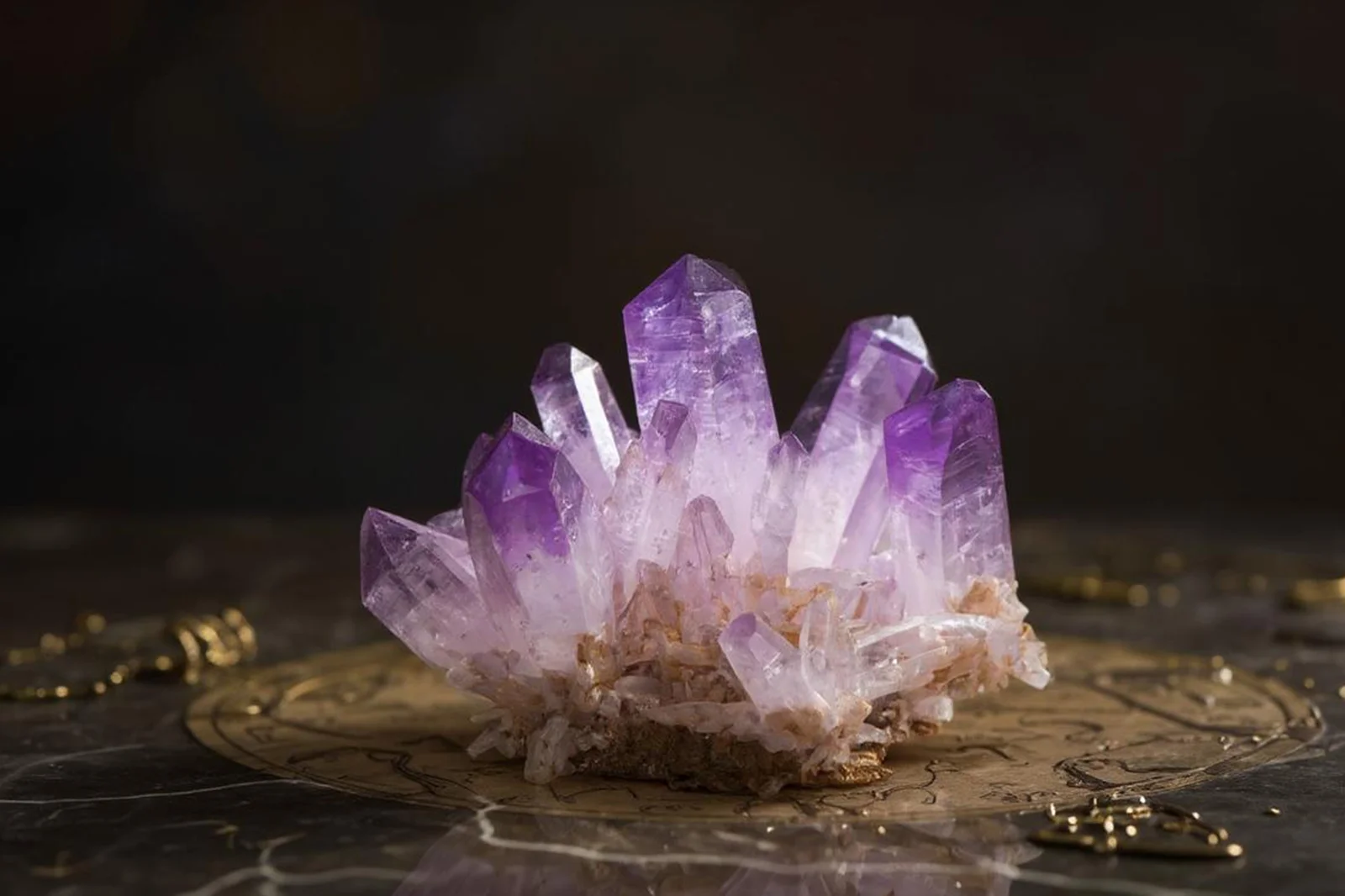
Stories
Amethyst Through History: From Ancient Legends to Modern Luxe

Amethyst has captivated humanity for centuries, cherished not only for its mesmerizing beauty but also for its intriguing mythology and deep historical significance. This gemstone, now a symbol of contemporary luxury, holds a legacy that stretches back to ancient times.
Ancient Legends and Royal Appeal
Historically, Amethyst was deeply revered by ancient civilizations. The Greeks believed this stone protected against intoxication, a myth immortalized in the tale of Dionysus and the nymph Amethystos. Romans wore Amethyst amulets engraved with symbolic imagery to enhance wisdom and courage. Egyptian royalty and nobility treasured Amethyst for adornment and ceremonial rituals.
The gemstone represented royalty, purity, and power, often adorning the crowns, rings, and necklaces of ancient pharaohs and queens. In the Middle Ages, European monarchs and high-ranking clergy prized Amethyst as a symbol of divine right and spiritual authority—purple being the color of emperors, bishops, and kings. The British Crown Jewels include prominent Amethyst pieces, underscoring the stone’s enduring prestige.
Legends from Tibet say Amethyst is sacred to Buddha, and it remains a favored stone for prayer beads, linking the stone to meditative traditions and inner peace. Across cultures and centuries, Amethyst’s vivid color and mysterious origins inspired not only awe, but a deep sense of protection and connection to higher realms.
Spiritual Significance Across Cultures
Amethyst’s spiritual allure is as compelling as its physical beauty. For centuries, cultures around the world have turned to this remarkable stone for guidance, protection, and clarity. In Tibet, monks use amethyst in prayer beads—known as malas—trusting that its calming energy supports deep meditation and a connection to higher consciousness.
In medieval Europe, amethyst rings adorned the hands of bishops and cardinals, the rich purple hue representing humility, sincerity, and spiritual wisdom. The stone became known as the “Bishop’s Stone,” a reminder of moral strength and purity in the face of worldly temptation.
Amethyst’s protective reputation also spans continents. Among certain Native American tribes, amethyst was believed to be a healing stone that brought harmony to the mind and spirit, sometimes used in ceremonial tools or worn as an amulet during vision quests and spiritual journeys. In parts of Africa, amethyst was historically associated with rainmakers and healers, valued for its believed ability to bring forth rain and bless the land, as well as to protect against negative forces.
Ancient Eastern traditions revered amethyst as a talisman for safe travel and spiritual purification. In feng shui, it’s placed in homes and offices to purify the environment, inspire spiritual growth, and foster tranquility.
Today, amethyst continues to bridge cultures in the world of modern wellness. It is widely used in crystal healing, meditation practices, and holistic therapies—believed to soothe stress, encourage emotional balance, and open the mind to new insights. Whether as a centerpiece in the home or a companion on a personal journey, amethyst’s reputation for nurturing the soul still resonates across continents and generations.
Renaissance Revival and Victorian Elegance
The Renaissance era marked a dazzling resurgence in Amethyst’s popularity, as artists and nobility alike were drawn to its vibrant, regal hue. During this period of cultural flourishing, gemstones were seen not only as symbols of status but as sources of inspiration and intellect. Leonardo da Vinci himself was said to be captivated by Amethyst, writing that the stone could sharpen the mind and help dispel negative thoughts—a testament to the gem’s reputation for enhancing clarity and creative vision.
As Europe moved into the Victorian age, Amethyst’s reputation only grew. Queen Victoria’s love for sentimental jewels brought the stone into fashion among the elite, who sought to express loyalty, devotion, and refinement through their personal adornments. Victorian jewelers often set amethysts in intricate gold and silver designs, creating rings, brooches, and necklaces that balanced romance with elegance.
The deep purple stone came to represent enduring affection, spiritual protection, and a sophisticated sense of style—qualities deeply cherished in Victorian society.
Modern Luxurious Reinvention
Today, Amethyst’s legacy thrives in the world of contemporary luxury. High-end designers, interior stylists, and collectors treasure this gemstone for its exquisite range—from soft, ethereal lilacs to dramatic, saturated purples. Its versatility allows it to shine in everything from statement jewelry to striking home accents, fitting seamlessly into modern spaces that celebrate individuality and artistic expression.
At Saluxe, each piece of Amethyst is meticulously curated, celebrating its historic significance while aligning seamlessly with modern aesthetic sensibilities. From stunning geodes to elegantly carved spheres and rare collector’s items, our collection highlights the fusion of ancient mystique and contemporary luxury.
Timeless Beauty, Eternal Allure
Amethyst is more than a gemstone; it’s a testament to centuries of reverence, symbolism, and artistry. Owning Amethyst connects you to an enduring narrative of history and luxury, a symbol of refined taste and cultural richness.
Discover the extraordinary world of Amethyst at Saluxe, and embrace a piece of history reimagined for today’s luxurious lifestyle.
Editorial Note — To bring our stories and concepts to life, some images are occasionally artistically refined or digitally composed.